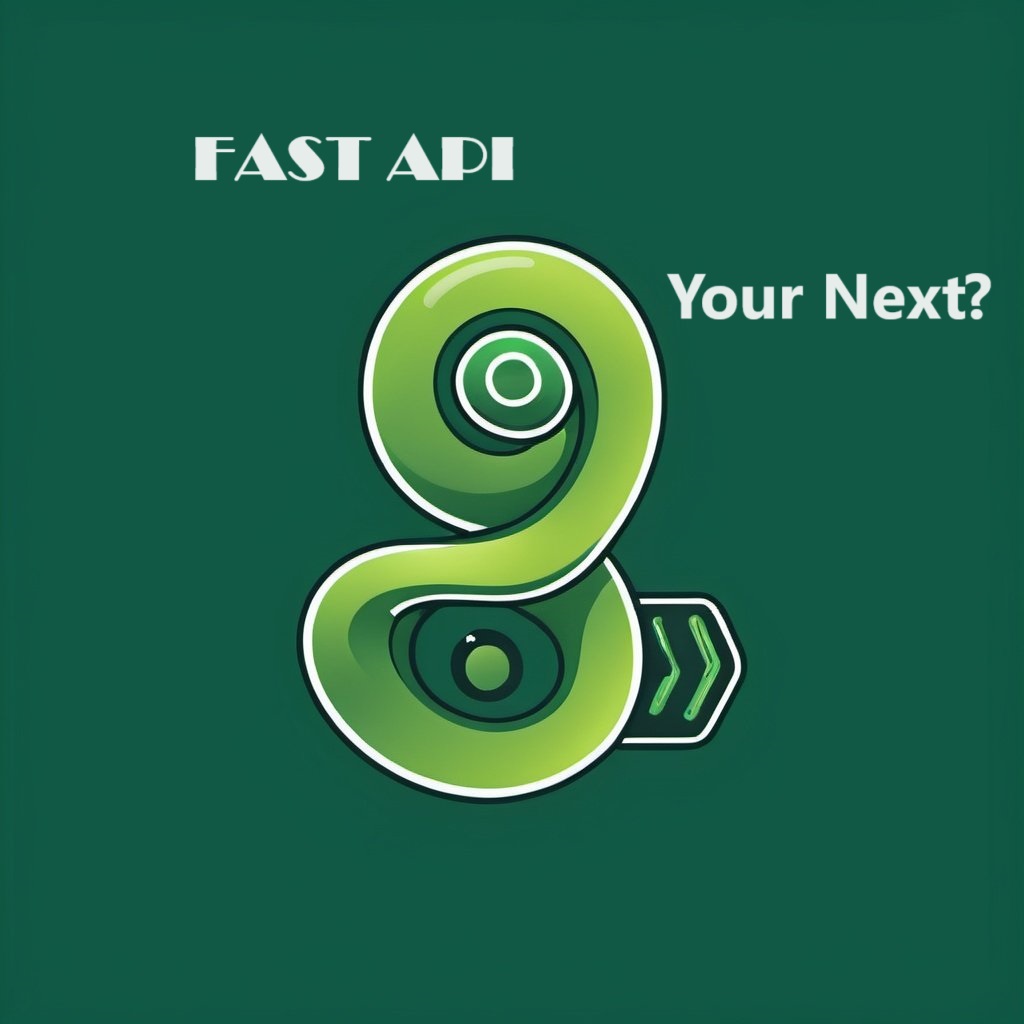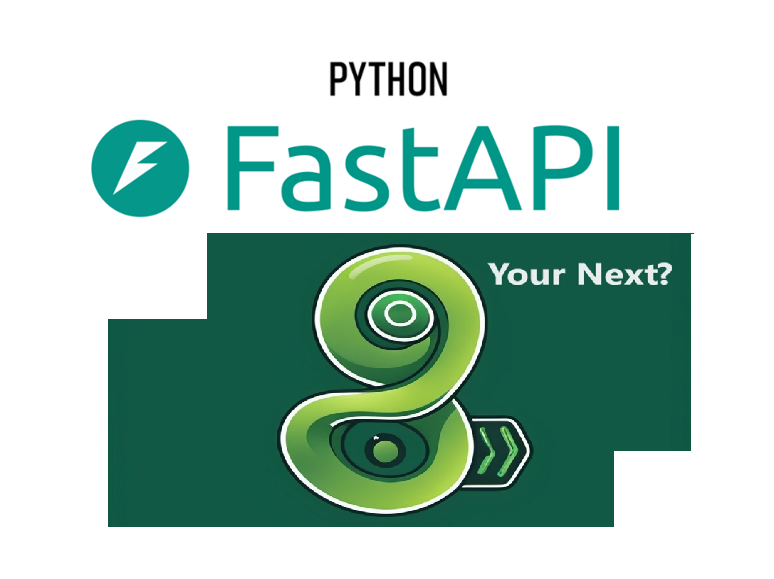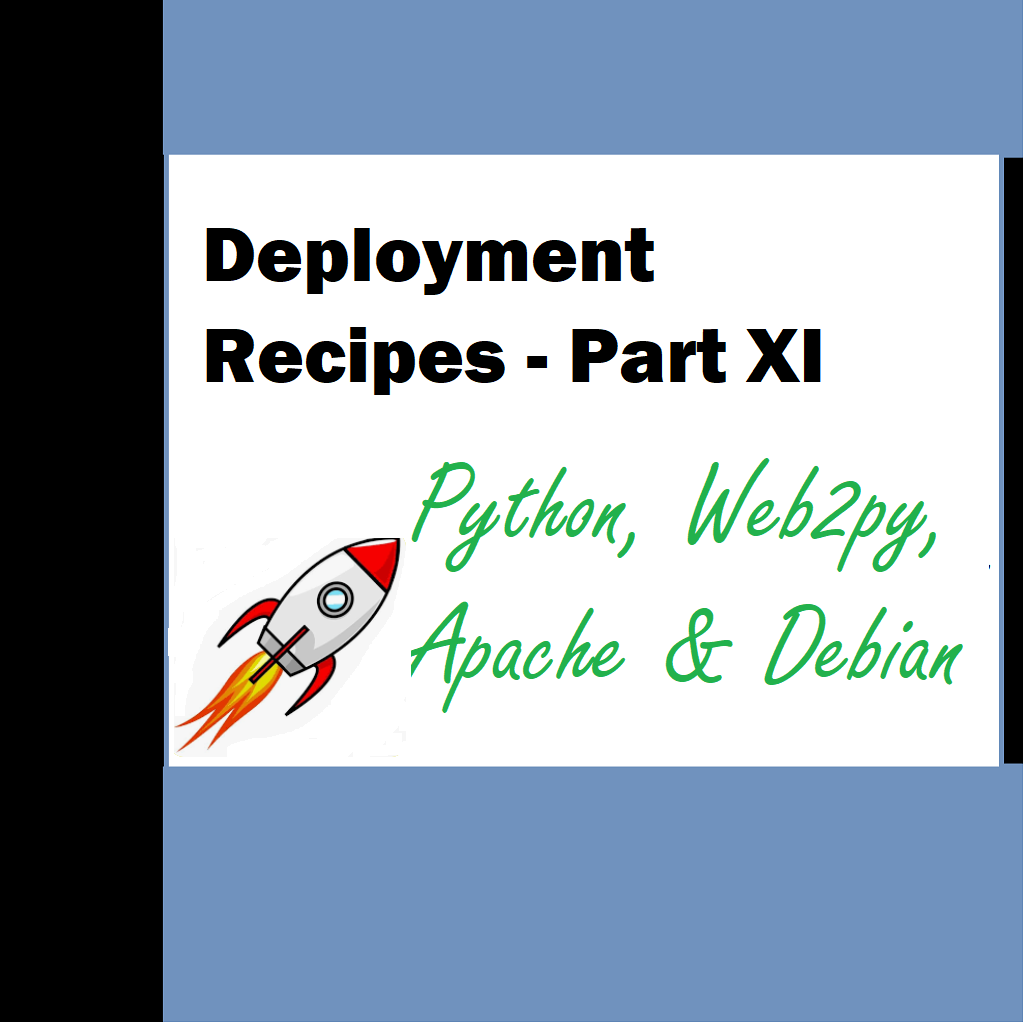The Next Generation Python Web Framework
In the world of web development, speed and efficiency are key. FastAPI, a modern, fast (high-performance), web framework for building APIs with Python 3.6+ based on standard Python type hints, has emerged as a game-changer. This article delves into what FastAPI is, its features, benefits, and how it stands out among other web frameworks.
FastAPI is a modern, high-performance web framework for building APIs with Python 3.6+ based on standard Python type hints. It is built on top of Starlette for the web parts and Pydantic for the data parts. FastAPI’s design prioritizes speed, making it one of the fastest Python frameworks available, comparable to Node.js and Go. This is achieved through its asynchronous support, allowing for concurrent request handling using Python’s async and await syntax.
A standout feature of FastAPI is its automatic generation of interactive API documentation with Swagger UI and ReDoc, which helps developers visualize and test endpoints effortlessly. FastAPI leverages Python type hints extensively, providing robust input validation and data serialization with minimal code. This reduces the likelihood of errors and enhances code readability and maintainability.
FastAPI also includes dependency injection, promoting modularity and code reusability, and has built-in security features such as OAuth2.0 and JWT. Its strong integration capabilities allow seamless use with SQLAlchemy for ORM, Celery for task queues, and other tools within the Python ecosystem. The framework is ideal for various applications, including microservices, real-time data applications, and machine learning model serving, making it a versatile choice for modern web development.

Contents
FastAPI: The Next Generation of Web Frameworks in Python.
Building a Simple API with FastAPI
Real-World Applications of FastAPI

JBL Cinema SB271, Dolby Digital Soundbar with Wireless Subwoofer for Extra Deep Bass
Price: ₹12,999/-
Introduction to FastAPI
FastAPI, created by Sebastián Ramírez, is a relatively new entrant in the Python web frameworks landscape but has quickly gained popularity due to its impressive features and performance. It is built on top of Starlette for the web parts and Pydantic for the data parts. The main goal of FastAPI is to enable the creation of robust APIs quickly and efficiently, with a focus on performance and ease of use.
Key Features of FastAPI
- Performance: FastAPI is one of the fastest Python web frameworks available, comparable to NodeJS and Go in terms of performance. This speed is achieved through the use of asynchronous programming, which is built into Python 3.6+.
- Ease of Use: With automatic interactive API documentation and validation, FastAPI makes it easy for developers to get started and maintain their APIs. It uses Python type hints to validate and serialize/deserialise data, reducing the need for boilerplate code.
- Automatic Interactive Documentation: FastAPI automatically generates interactive API documentation using Swagger UI and ReDoc, which can be incredibly helpful for both development and client interactions.
- Type Safety: By leveraging Python type hints, FastAPI ensures type safety across the board. This means fewer bugs and clearer code, as the types of inputs and outputs are explicitly declared and checked.
- Dependency Injection: FastAPI supports dependency injection, making it easier to manage application components and promoting code reusability.
- Asynchronous Support: Built on top of asynchronous programming, FastAPI can handle many requests concurrently, making it ideal for high-performance applications.
- Security: FastAPI includes built-in security features such as OAuth2.0 and JWT (JSON Web Tokens), providing robust security mechanisms for API development.
Setting Up FastAPI
To get started with FastAPI, you need Python 3.6+ installed on your system. You can install FastAPI and an ASGI server (like Uvicorn) using pip:
pip install fastapi uvicorn
Building a Simple API with FastAPI
Here is a simple example to illustrate how to build a basic API with FastAPI.
from fastapi import FastAPI
app = FastAPI()
@app.get(“/”)
def read_root():
return {“Hello”: “World”}
@app.get(“/items/{item_id}”)
def read_item(item_id: int, q: str = None):
return {“item_id”: item_id, “q”: q}
This code snippet creates a basic FastAPI application with two endpoints. The first endpoint (/) returns a “Hello World” message, and the second endpoint (/items/{item_id}) returns the item ID along with an optional query parameter.
To run the application, you can use Uvicorn:
Copy code
uvicorn main:app –reload
This command starts the server with live reload enabled, which means the server will restart whenever you make changes to the code.
Advanced Features of FastAPI
FastAPI is not just about building simple APIs quickly. It also supports advanced features that are essential for developing complex applications.
Data Validation and Serialization
FastAPI uses Pydantic for data validation and serialization. This allows you to define data models with standard Python types and add validations easily.
from pydantic import BaseModel
class Item(BaseModel):
name: str
description: str = None
price: float
tax: float = None
@app.post(“/items/”)
def create_item(item: Item):
return item
In this example, the Item model defines the structure of the data. When a POST request is made to /items/, FastAPI will validate the incoming JSON data against the Item model.
Dependency Injection
FastAPI’s dependency injection system makes it easy to manage dependencies and modularize your code. Here’s an example of using dependency injection:
from fastapi import Depends
def common_parameters(q: str = None, skip: int = 0, limit: int = 10):
return {“q”: q, “skip”: skip, “limit”: limit}
@app.get(“/items/”)
def read_items(commons: dict = Depends(common_parameters)):
return commons
In this example, the common_parameters function is defined as a dependency. The Depends function tells FastAPI to use common_parameters for the /items/ endpoint.
Asynchronous Endpoints
One of the key advantages of FastAPI is its support for asynchronous programming. You can define asynchronous endpoints using the async keyword.
import asyncio
@app.get(“/async_items/”)
async def read_async_items():
await asyncio.sleep(1)
return {“message”: “This is an asynchronous endpoint”}
This endpoint simulates a delay using asyncio.sleep and demonstrates how to define an asynchronous endpoint.
FastAPI vs. Other Frameworks
FastAPI is often compared to other popular web frameworks like Django, Flask, and Tornado. Here’s a brief comparison:
- FastAPI vs. Flask: Flask is a microframework that is simple and easy to use. However, it does not have built-in support for asynchronous programming and requires additional libraries for data validation and serialization. FastAPI, on the other hand, is asynchronous by default and includes built-in data validation and serialization.
- FastAPI vs. Django: Django is a full-fledged web framework with a lot of built-in features, including an ORM, authentication, and an admin interface. While Django is great for building large, monolithic applications, it can be overkill for building simple APIs. FastAPI is more lightweight and focused on building APIs with high performance.
- FastAPI vs. Tornado: Tornado is an asynchronous web framework that is known for its performance. However, it lacks the ease of use and modern features that FastAPI offers, such as automatic API documentation and type hints.
Comparison
Let’s see a few comparisons – A comparison between FastAPI and Flask
| Feature | FastAPI | Flask |
| Performance | High, comparable to Node.js and Go due to async support | Moderate, synchronous by default |
| Ease of Use | Very easy with automatic interactive documentation | Simple and easy for small projects |
| Async Support | Built-in, async and await syntax | Requires extensions (e.g., Flask-Async) |
| Type Hints | Extensive use for validation and serialization | Not natively supported, requires additional libraries |
| API Documentation | Automatically generated with Swagger UI and ReDoc | Requires third-party extensions like Flask-Swagger-UI |
| Data Validation | Built-in via Pydantic | Not included, needs additional libraries |
| Dependency Injection | Built-in support | Not built-in, requires custom implementation |
| Security | Built-in support for OAuth2.0 and JWT | Needs extensions like Flask-JWT |
| Modularity | Highly modular with dependency injection | Modular but less structured dependency management |
| Community and Ecosystem | Growing, active, many integrations | Large, mature, extensive ecosystem and libraries |
| Learning Curve | Moderate due to modern features | Low, straightforward for beginners |
| Project Suitability | Ideal for APIs, microservices, real-time apps | Best for simple web applications, small to medium APIs |
| Asynchronous Programming | Natively supported with async/await | Needs third-party libraries |
| Development Speed | Fast due to automatic features and minimal boilerplate | Fast for simple apps, slower for complex requirements |
| Maintenance | Easier with type safety and automatic documentation | Can become cumbersome without strict guidelines |
| Data Handling | Pydantic models for robust validation and parsing | No built-in data validation, uses libraries like Marshmallow |
| Framework Size | Lightweight, includes only necessary tools | Lightweight, highly extensible |
This table provides a concise comparison to help developers choose the right framework based on their project requirements and preferences.
And now a comparison between FastAPI and Node.js
| Feature | FastAPI | Node.js |
| Language | Python | JavaScript |
| Performance | High, asynchronous capabilities using async and await | High, non-blocking I/O and event-driven architecture |
| Speed Comparison | Comparable, FastAPI often matches Node.js in performance for I/O bound tasks | Comparable, Node.js is known for high performance in I/O bound tasks |
| Ease of Use | Very user-friendly with automatic interactive documentation | Easy for JavaScript developers, large number of libraries |
| Async Support | Built-in, native async and await support | Built-in, native async and await support |
| Type Hints | Extensive use for validation and serialization | Not natively supported, TypeScript can be used for type safety |
| API Documentation | Automatically generated with Swagger UI and ReDoc | Requires libraries like Swagger for Express.js |
| Data Validation | Built-in via Pydantic | Needs libraries like Joi or Express-Validator |
| Dependency Injection | Built-in support | Not built-in, requires frameworks like NestJS |
| Security | Built-in support for OAuth2.0 and JWT | Requires libraries like Passport.js or jsonwebtoken |
| Modularity | Highly modular with dependency injection | Modular, with npm packages and frameworks like Express |
| Community and Ecosystem | Growing, active, many integrations | Very large, mature, extensive ecosystem and community |
| Learning Curve | Moderate due to modern features and Python syntax | Moderate, easier for those familiar with JavaScript |
| Project Suitability | Ideal for APIs, microservices, real-time apps | Ideal for I/O bound applications, microservices, real-time apps |
| Concurrency Model | Async I/O, concurrent handling via async/await | Event loop, non-blocking I/O |
| Development Speed | Fast due to automatic features and minimal boilerplate | Fast, extensive library support and JavaScript familiarity |
| Maintenance | Easier with type safety and automatic documentation | Depends on project structure and use of TypeScript |
| Data Handling | Pydantic models for robust validation and parsing | Needs additional libraries, can use TypeScript for type safety |
| Framework Size | Lightweight, includes only necessary tools | Lightweight core, extensible with numerous npm packages |
This comparison highlights the strengths and considerations of both FastAPI and Node.js, helping developers make an informed decision based on their specific project needs and technology preferences.
A comparison between FastAPI and Django:
| Feature | FastAPI | Django |
| Performance | High, asynchronous capabilities using async and await | Moderate, primarily synchronous |
| Ease of Use | Very user-friendly with automatic interactive documentation | User-friendly, extensive built-in features |
| Async Support | Built-in, native async and await support | Limited, introduced in Django 3.1, but not pervasive |
| Type Hints | Extensive use for validation and serialization | Not natively supported |
| API Documentation | Automatically generated with Swagger UI and ReDoc | Requires third-party libraries like DRF (Django REST framework) |
| Data Validation | Built-in via Pydantic | Built-in through Django forms and models |
| Dependency Injection | Built-in support | Not built-in, custom solutions needed |
| Security | Built-in support for OAuth2.0 and JWT | Built-in authentication system, supports OAuth2 and JWT with extensions |
| Modularity | Highly modular with dependency injection | Monolithic but can be modular using Django apps |
| Community and Ecosystem | Growing, active, many integrations | Very large, mature, extensive ecosystem and community |
| Learning Curve | Moderate due to modern features and Python syntax | Moderate, extensive documentation and resources available |
| Project Suitability | Ideal for APIs, microservices, real-time apps | Ideal for full-stack web applications, CMS, large-scale projects |
| Development Speed | Fast due to automatic features and minimal boilerplate | Fast for full-stack applications with built-in admin interface |
| Maintenance | Easier with type safety and automatic documentation | Easier with Django’s conventions and large community support |
| Data Handling | Pydantic models for robust validation and parsing | ORM built-in, forms for validation and serialization |
| Framework Size | Lightweight, includes only necessary tools | Larger, full-featured framework |
| Scalability | Highly scalable, suitable for microservices architecture | Scalable, but typically used in monolithic applications |
| ORM (Object-Relational Mapping) | None built-in, but can integrate with SQLAlchemy | Built-in ORM with extensive features |
| Admin Interface | None built-in | Built-in, powerful admin interface |
| Template Engine | None built-in | Built-in template engine |
| Routing | Automatic and customizable routing | Built-in URL routing |
| Built-in Features | Focused on API development, fewer built-in full-stack features | Full-stack features including ORM, admin, forms, authentication |
This comparison highlights the key differences and similarities between FastAPI and Django, helping developers choose the framework that best fits their project requirements and development preferences.
And finally a comparison between FastAPI and Web2py:
| Feature | FastAPI | Web2py |
| Performance | High, asynchronous capabilities using async and await | Moderate, synchronous |
| Ease of Use | User-friendly with automatic interactive documentation | User-friendly, designed for rapid development |
| Async Support | Built-in, native async and await support | Not natively supported |
| Type Hints | Extensive use for validation and serialization | Not supported |
| API Documentation | Automatically generated with Swagger UI and ReDoc | Requires manual documentation |
| Data Validation | Built-in via Pydantic | Built-in, using DAL (Database Abstraction Layer) |
| Dependency Injection | Built-in support | Not built-in, custom solutions needed |
| Security | Built-in support for OAuth2.0 and JWT | Built-in authentication system, CSRF, and role-based access control |
| Modularity | Highly modular with dependency injection | Modular, but follows a specific MVC structure |
| Community and Ecosystem | Growing, active, many integrations | Mature, smaller community but active |
| Learning Curve | Moderate due to modern features and Python syntax | Low, very beginner-friendly with comprehensive tutorials |
| Project Suitability | Ideal for APIs, microservices, real-time apps | Ideal for rapid web application development |
| Development Speed | Fast due to automatic features and minimal boilerplate | Fast, designed for rapid development |
| Maintenance | Easier with type safety and automatic documentation | Easier with built-in tools and clear structure |
| Data Handling | Pydantic models for robust validation and parsing | DAL for database interactions |
| Framework Size | Lightweight, includes only necessary tools | Lightweight, includes essential tools for web development |
| Scalability | Highly scalable, suitable for microservices architecture | Scalable, best for small to medium-sized applications |
| ORM (Object-Relational Mapping) | None built-in, but can integrate with SQLAlchemy | Built-in DAL |
| Admin Interface | None built-in | Built-in administrative interface |
| Template Engine | None built-in | Built-in template language |
| Routing | Automatic and customizable routing | Built-in URL routing |
| Built-in Features | Focused on API development, fewer built-in full-stack features | Full-stack features including ORM, authentication, admin interface |
Real-World Applications of FastAPI
FastAPI is suitable for a wide range of applications, from simple APIs to complex microservices. Some of the real-world use cases include:
- Machine Learning APIs: FastAPI’s speed and performance make it ideal for serving machine learning models. It can handle the high number of requests per second that are often required in machine learning applications.
- Microservices: FastAPI’s support for asynchronous programming and dependency injection makes it a great choice for building microservices. Each service can be developed, tested, and deployed independently, leading to a more modular and scalable architecture.
- Real-Time Applications: With its asynchronous capabilities, FastAPI can be used to build real-time applications such as chat applications, live notifications, and more.
- APIs for Frontend Applications: FastAPI is excellent for building backend APIs for frontend applications built with frameworks like React, Vue, or Angular. The automatic generation of interactive API documentation is a significant advantage for frontend developers.
Community and Ecosystem
The FastAPI community is growing rapidly, and there are many resources available for learning and development. The official documentation is comprehensive and well-maintained, providing detailed guides and examples. Additionally, there are numerous tutorials, courses, and third-party libraries that extend FastAPI’s functionality.
FastAPI also integrates well with other tools and frameworks in the Python ecosystem. For example, you can use SQLAlchemy for database interactions, Celery for background tasks, and Alembic for database migrations. These integrations make it easy to build full-featured applications with FastAPI.
Conclusion
FastAPI represents a significant advancement in web framework technology for Python. Its combination of speed, ease of use, and modern features make it an excellent choice for developers looking to build high-performance APIs. Whether you are building a simple API, a complex microservice, or a real-time application, FastAPI provides the tools and capabilities needed to develop robust and efficient solutions.
As the community and ecosystem around FastAPI continue to grow, it is poised to become a mainstay in the Python web development landscape. Its focus on performance, developer productivity, and modern best practices ensure that it will remain relevant and valuable for years to come. If you haven’t yet explored FastAPI, now is the perfect time to dive in and experience the next generation of web frameworks.
Top of Form
Bottom of Form






I have read a few excellent stuff here. Definitely price bookmarking for revisiting. I surprise how so much effort you set to create this sort of magnificent informative web site.
I as well believe therefore, perfectly composed post! .
Very interesting subject, appreciate it for posting.